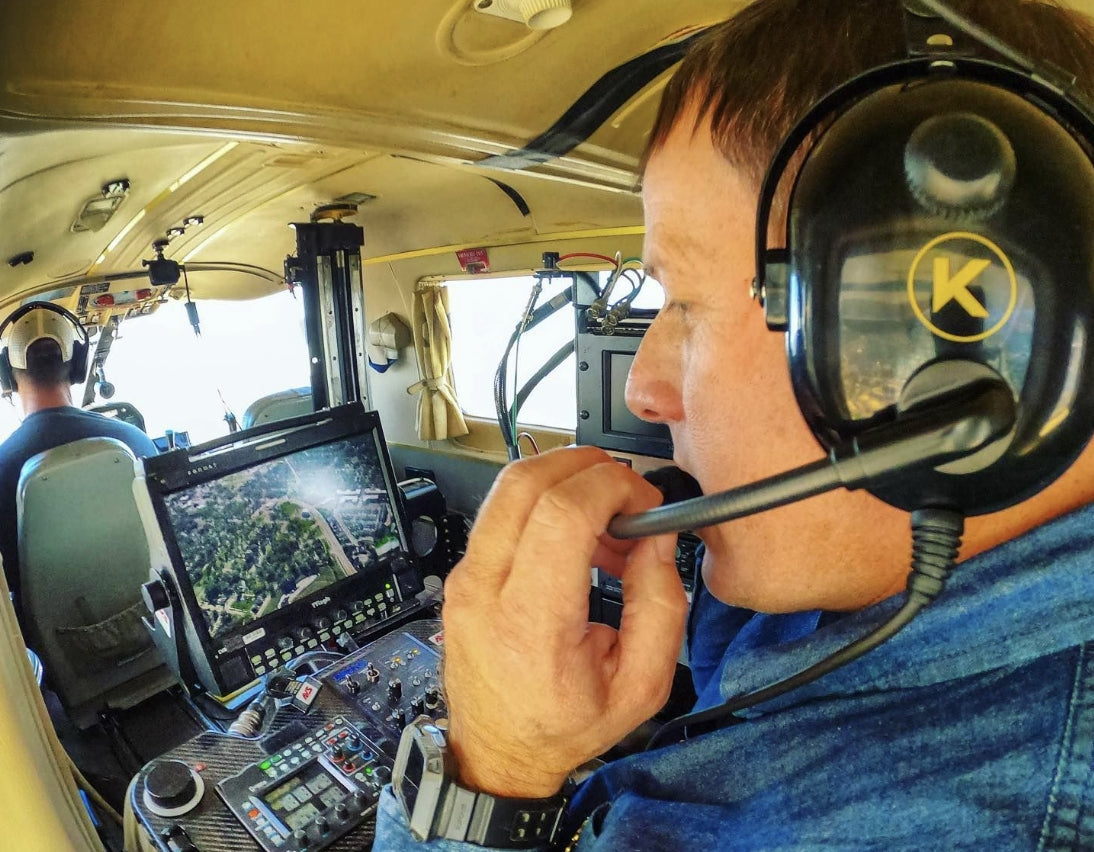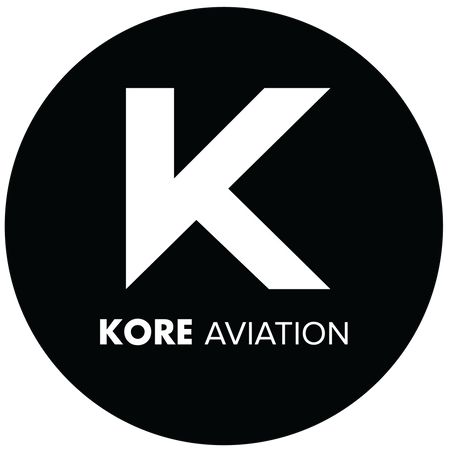
Kore Aviation - One of the most essential accessories in aviation is a high-quality headset. From a student pilot to a private pilot, the aviation headset selected affects comfort, communications, and safety.
Selecting a preferred aviation headset is not that simple since it also determines hearing ATC, the amount of fatigue accumulated in a lengthy flight, and the ability to respond effectively when challenged.
Beyond learning how to buy an aviation headset, knowing how to test one before purchasing is equally essential. Let's follow these two steps to make a good decision that will improve flying experience.
What to Know Before Buying an Aviation Headset
Buying your first aviation headset can feel like a small step, but it makes a big difference in how you train and fly. There’s more to it than picking something off a shelf. As a student pilot, you’ll want something reliable, clear, and comfortable that doesn’t break the bank. These are key things to think about before choosing a headset:
-
Understand the difference between PNR and ANR
Headsets come with either passive or active noise reduction. PNR stands for passive noise reduction and uses foam padding and ear cups to block out engine noise. It doesn’t require batteries and tends to be more affordable. ANR, or active noise reduction, uses electronics to cancel out background sounds like engine rumble. While ANR works well in louder, high-performance aircraft, it’s more expensive and adds extra complexity.
For most student pilots flying single-engine trainers, a solid PNR headset like those from Kore Aviation is often the smarter choice. It offers enough noise protection, keeps things simple, and costs far less than ANR without compromising clarity or durability during flight training.
-
Check for long-wear comfort
You’ll be wearing this headset for a couple of hours at a time, maybe longer during cross-country flights. It needs to feel good from takeoff to landing. Look for headsets with adjustable bands, padded cushions, and ear seals made from soft material like gel or memory foam. If it feels heavy or tight after 30 minutes, it’s probably not the right fit. Student pilots benefit from lightweight headsets, ideally under 16 ounces, that stay comfortable even in warm cockpits.
-
Make sure it fits your aircraft’s plug setup
Not all headsets plug in the same way. General aviation planes usually use twin plugs, often called PJ plugs. Helicopters use U174 connectors, and some premium aircraft have a single-plug setup called LEMO. Before you buy anything, check the plug style in the cockpit where you’ll be flying. Buying the wrong connector type creates unnecessary hassle and may require an adapter.
-
Look into the warranty and support
A headset is an investment, and a good one should come with a solid warranty. Many brands offer coverage between three and five years. This not only protects you from defects but also gives peace of mind that the company will help if something goes wrong. Stick with brands that offer fast support and don’t make you jump through hoops to get service or replacement parts.
Choosing the right headset early in your flight training helps you focus on flying, not fiddling with your gear. For student pilots, a dependable PNR headset is usually more than enough. It keeps your training affordable without cutting corners on safety or performance.
Discover Mote: https://www.koreheadset.com/blogs/blog/best-aviation-headset-guide
Testing Your Aviation Headset: What to Do Before Takeoff
Buying a headset is just the beginning. Before you ever get into the cockpit, it's important to make sure your headset works the way it should. The last thing you want is to deal with technical problems when you're mid-flight. Testing the headset ahead of time gives you peace of mind and helps you avoid distractions or communication issues once you're in the air. Here's how to do that step by step.
-
Start in a quiet space
Once your headset arrives, try it on in a calm, quiet room. This gives you a chance to focus on how it fits and whether it feels comfortable. Pay attention to how well the ear cups block out background noise. A good headset should create a seal around your ears and block out the surrounding sound naturally, even before turning anything on. -
Adjust the headband
With the headset on, adjust the band so that it sits on your head securely but not tightly. You should be able to wear it without any pressure points. If it feels too tight, you'll end up with a headache after just a short flight. If it’s too loose, it could slip out of place while you're flying. Aim for a snug but relaxed fit. -
Test the microphone
Plug the headset into a flight simulator or directly into an aircraft system, and do a sidetone test. This means talking into the microphone and listening to your own voice, or having someone else listen in. If your voice sounds clean and clear, with no crackling, lag, or static, you’re good to go. But if there’s distortion or silence, there might be an issue with the mic wiring or the connection. -
Check audio clarity with outside sources
Tune in to a local radio station or an airport ATIS channel to test how the headset handles outside audio. Adjust the volume and balance controls while you listen. The audio should be sharp and distortion-free. If voices or music sound muffled or crackly, the speaker or wiring might be faulty. -
Take it on a short test flight if possible
If there are no restrictions, bring the headset along for a brief flight. This is the best way to see how it performs in a real cockpit. Pay attention to comfort over time, especially during longer stretches. Make sure you can hear and be heard clearly during radio communications. This final test will tell you whether the headset is the right fit for your flying environment.
Testing your headset this way helps you avoid surprises once you’re in the air. It also gives you a chance to get comfortable with the feel and sound of your gear. Even a quick pre-flight check can make all the difference.
Mistakes to Avoid When Buying a Headset
It's easy to get carried away with brand names, online deals, or discounts. Some oversights can be exceptionally costly. One of the most common is buying a headset simply because of its price or physical features.
A headset may look professional, but that does not mean it fits comfortably or works reliably. Another common mistake is failing to check the plug type, particularly for student pilots who tend to rent different planes. And don't skip over warranty details. If you break your headset without any coverage, repairs can be costly.
Make sure you perform thorough testing before taking a headset to your checkride. Avoid the possibility of communication malfunctions at critical times.
Backed by Experts: What the Industry Says
The FAA’s Pilot’s Handbook of Aeronautical Knowledge states that effective communication is critical to aviation safety. A reliable headset is key to maintaining that clarity in high-stress situations. The Aircraft Owners and Pilots Association (AOPA) also reinforces this in its gear guides, recommending comfort-tested, durable headsets for student and professional pilots alike.
Conclusion: Buy Smart, Fly Confident
Purchasing an aviation headset is not about fashion; it's about selecting equipment that helps you excel in one of the most versatile environments. Think about your aircraft category, the levels of noise, and the frequency of your flights. When selecting a headset, remember to check it thoroughly so you are not surprised when airborne.
Whether for personal security or work duties, your aviation headset significantly impacts safety and performance, which many overlook. But with the proper headset, every flight becomes quieter and more enjoyable.
Fly Smarter with Kore Aviation
Looking for a reliable aviation headset you can trust in any situation? Kore Aviation offers premium-quality headsets designed with pilots in mind. Their headsets provide the comfort, clarity, and durability needed for every stage of your flight training or career.
Shop Kore Aviation’s Headsets and experience the difference for yourself.
